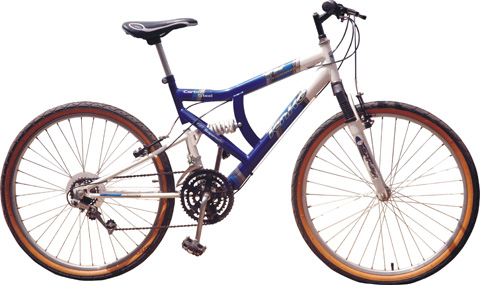From Carbon Fibre to Cardboard – Three Exotic Bike Materials
These days, bicycle manufacturers are turning to ever-more exotic materials to construct their mean machines from; in the past, tubular steel was about the only choice available to designers, but now, advances in technology mean that some truly exotic substances can now be effectively used to create bike frames from:

Carbon Fibre
This material is constructed from many woven fibres, which consist mainly of carbon atoms; multiple strips can be combined to prepare a special fabric, which is highly prized in the world of motorsports and aeronautics for its light weight, immense strength, and robust stiffness; these properties also make it an attractive go-to material for anyone looking to construct a high-tech bicycle frame.
Some advantages of using this material for bike construction are:
- It can be made into virtually any shape, making one-piece monocoque designs possible.
- The orientation of fibres can be shifted at different sections of the bike during construction, so that various parts of the frame possess additional strength across a range of directions, so that some parts will be reinforced where required.
- A frame made from this material will typically be as strong as a tubular steel version, but with the advantage of being much lighter.
The sole down-side to carbon-fibre is its cost: only really high-end frames will end up being made from this material;
Titanium
The SR-71 blackbird was famously constructed of this wonder-metal, since it was about the only material strong enough to cope with the rigours of travelling at speeds in excess of 2000mph and altitudes beyond 85,000ft; with such impressive characteristics, titanium would certainly make a great material to construct a bike frame from, but you could say that it is a bit like swatting a fly with a sledgehammer: total overkill.
As one of the most expensive materials to use in bike frame construction, titanium offers similar properties to steel, except with a better strength-to-weight ratio and improved resistance to corrosion.
With such a tough material, the cost to machine bike parts from chunks of titanium goes through the roof: its properties also present designers with some awkward challenges: despite being stronger than steel, it is not as rigid, meaning that often, fatter tubes are used in titanium frames in order to keep it stiff.
Cardboard
Recently, a genius Israeli inventor proposed a new material to construct bicycle frames from: cardboard;
By packing layer upon layer of the material into a dense formation, it is possible to produce a frame which is lightweight and strong enough to support the weight of a human rider;
After compressing the cardboard, a series of processes render the frame fire-resistant and waterproof (no chance of this frame going soggy in the rain);
The idea behind crafting a bike from cardboard and other recycled materials is to reduce the cost of manufacture: at an expected selling price of just £12, it looks as if this invention could open up a whole range of transport possibilities for developing countries and provide an affordable answer for those in need of an environmentally-friendly set of wheels.
Dianne Bryce is a cycling enthusiast, who owns a collection of over 20 vintage Raleigh bikes.

